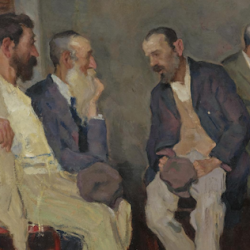Steve Corbett and Brian Fikkert’s Helping Without Hurting in Church Benevolence is a handbook to help churches give aid to low-income people. It explains how to create a policy and philosophy of benevolence, how to build the church’s capacity, and offers training scenarios, questionnaires and lots of lists. It truly is what it purports to be, a “practical guide” for churches.
But the practical guide is shaped by fundamental theological convictions. When defining poverty, the authors refuse to define it in terms of material deprivation. Rather, poverty is essentially about broken relationships, and that perspective is rooted in Trinitarian theology: “God is inherently a relational being. From all eternity, Father, Son, and Holy Spirit exist in perfect relationship with one another. As beings made in the image of this triune God, human beings are wired for relationship as well. Indeed, the Bible teaches that in creation God established four foundational relationships for each human being: relationships with God, with self, with others, and with the rest of creation.” Fullness of life exists when “we experience deep communion with loving God . . . understand our inherent dignity and worth as image-bearers. . . live in positive, giving relationships with others . . . and actively steward God’s creation, both caring for it and being able to work and to support ourselves as a result of that work” (19).
Material poverty is “a symptom of something deeper: the underlying brokenness in the four key relationships” (21). And that means that we cannot relieve poverty simply through material gifts. Poverty is overcome when those key relationships are restored, when the poor have their relationships with God, others, and the creation restored, when they begin to see themselves as God created them, as image bearers of the Creator.
The authors also insist that benevolence is a two-way transaction that requires a two-way transformation. Charity is not the whole giving help to the broken. It is the broken giving assistance to other broken people. And the giver of charity stands in need of transformation as the recipient. Poverty alleviation, they argue, is “a process in which people, both the materially poor and the materially non-poor, are empowered to move closer to living in right relationship with God, self, others, and the rest of creation” (24).
The church is central to their program. Broken relationships are healed only through Jesus, who alone has the power “to address individual behaviors, abusive or exploitative people, oppressive systems, and demonic forces that cause the broken relationships that are at the heart of poverty.” The church is “the body, bride, and fullness of Jesus Christ.” What the poor need is Jesus, and “He is found in the local church!” (35).














